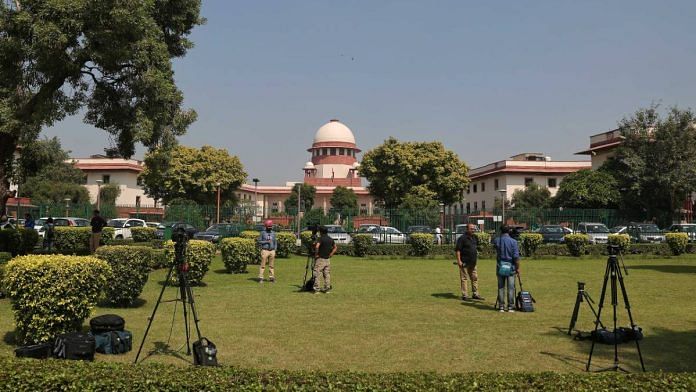New Delhi: The Supreme Court has dismissed the Haryana government’s plea to allow police or investigating agencies to serve summons electronically under Section 35 of the Bharatiya Nagarik Suraksha Sanhita (BNSS), which can be invoked to arrest an individual without a warrant. Not serving a physical notice, the court said, could have a drastic effect on the personal liberty of an individual, because non-compliance with such a notice can lead to arrest.
Section 35 pertains to the summoning of an individual only to join an investigation—undergo questioning for instance.
The Haryana government’s plea, which was dismissed by a bench of Justices M.M. Sundresh and N. Kotiswar Singh, had sought modification of the top court’s January judgment that declared that summons to be issued to an accused either under section 41A of the erstwhile Criminal Procedure Code (CrPc) or Section 35 of the BNSS cannot be served through WhatsApp or other electronic means.
Though the BNSS recognises electronic service of notice, it has limited the extent to which it can be applied. With regard to Section 35, the bench concluded, there was no specific mention in the provision that electronic summons can be served to a suspect.
In this backdrop, the court overruled Haryana’s argument that since the BNSS contemplated usage of electronic communication in judicial proceedings, the same should be allowed during police investigation.
The order was passed on 16 July but uploaded to the court’s website Wednesday.
Section 35 provisions
Sub-provisions of Section 35, particularly 3, 4, 5 and 6, deal with a situation when the police do not need to arrest a person against whom there is a complaint or reasonable suspicion of involvement in a cognisable offence. Under such a condition, the police, in terms of section 35(3) of the BNSS, are required to issue a summons notice to the suspect.
On receiving notice, the suspect, according to Section 35(4), has to comply with it. Section 35(5) says that if the person summoned continues to be cooperative, he/she shall not be arrested unless for reasons recorded by the police.
If the person fails to comply with the summons, Section 35(6) allows the police, subject to such orders as may have been passed by a court in this behalf, arrest the person for the offence mentioned in the notice.
After studying the legislative intent behind the provisions, the top court noted that they describe the procedure that must be fulfilled before a person is arrested without a warrant, and restrict arbitrary arrests. There is thus an inbuilt safeguard seeking to secure an individual’s liberty, a crucial aspect of right to protection of liberty under Article 21.
Hence, the court said, no authority can be permitted to encroach upon this fundamental right. In this backdrop, an attempt to interpret the provision as a mere procedural one, as suggested by Haryana, would amount to rewriting the provision itself, the court held.
It further observed that the legislature had delineated the use of electronic means for communication under Section 530 of the BNSS, which deals with holding trials and proceedings in electronic modes. But in its wisdom, it had specifically excluded the serving of notice to an accused under Section 35 from the ambit of procedures permissible through electronic communication.
The court rejected Haryana’s argument that since summons from court were permitted electronically under Sections 63, 64 and 71 of the BNSS, the police too could summon persons the same way.
The court highlighted the distinction between a judicial and executive procedure, saying the two cannot be equated with each other. This is because non-compliance of police summons can lead to curtailment of someone’s freedom, while in case of court summons that is not so.
The court also dismissed Haryana’s argument that the police should be permitted to e-serve the summons just the way they are allowed to intimate the court when a final report is filed in a case. Further, the police, under BNSS, can also summon a person electronically to produce documents that are needed for investigation. The top court held that these two procedures had no impact on the liberty of an individual.
(Edited by Nida Fatima Siddiqui)
Also Read: ‘No reels or stories in uniform’ — Himachal Police tell cops to lay off social media swag






